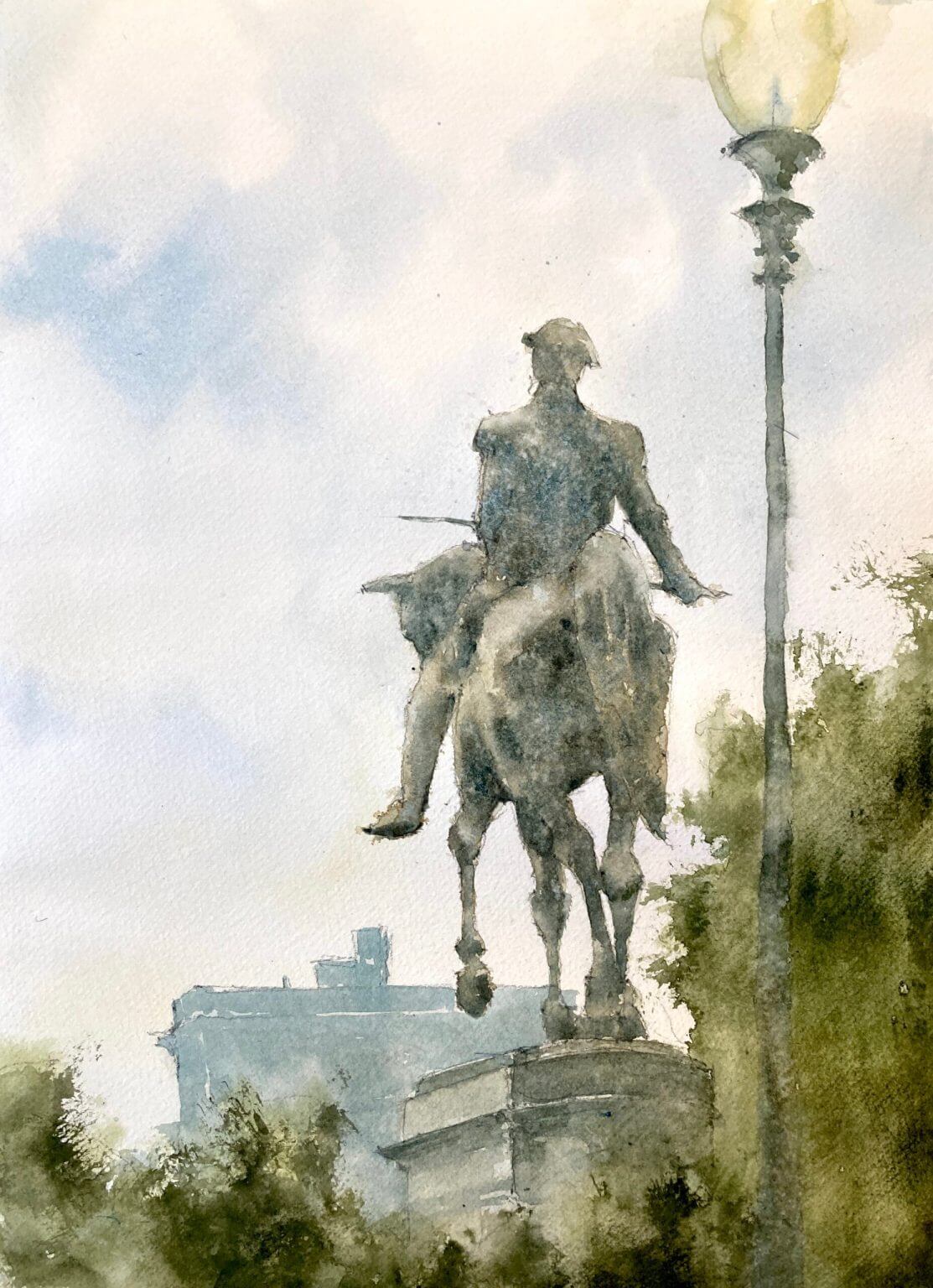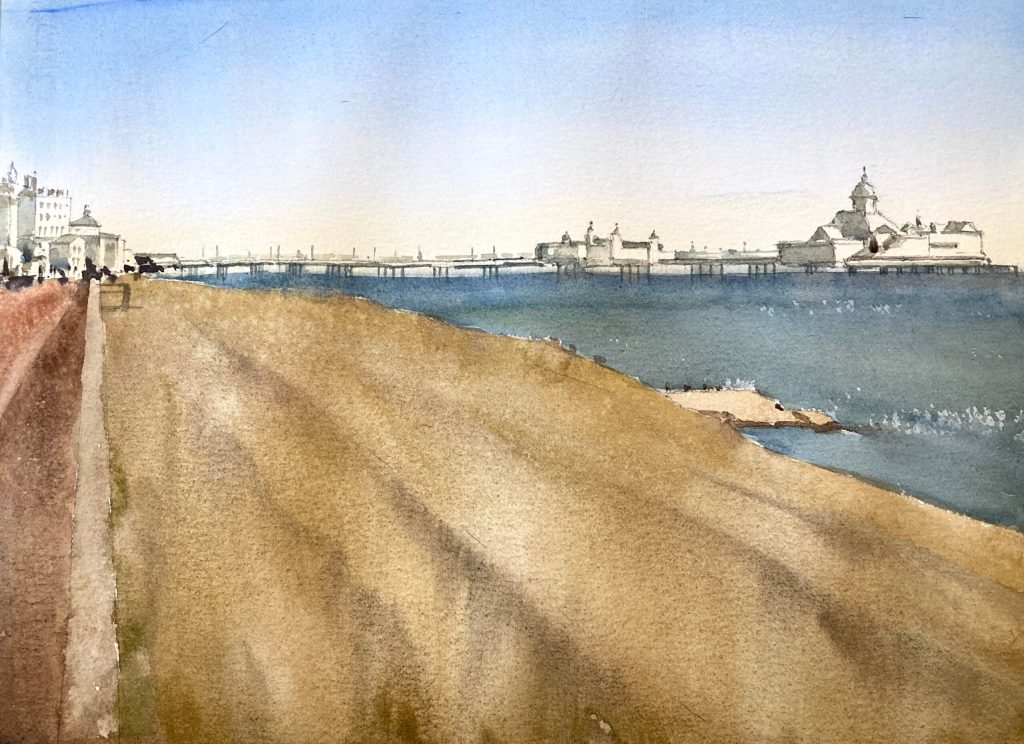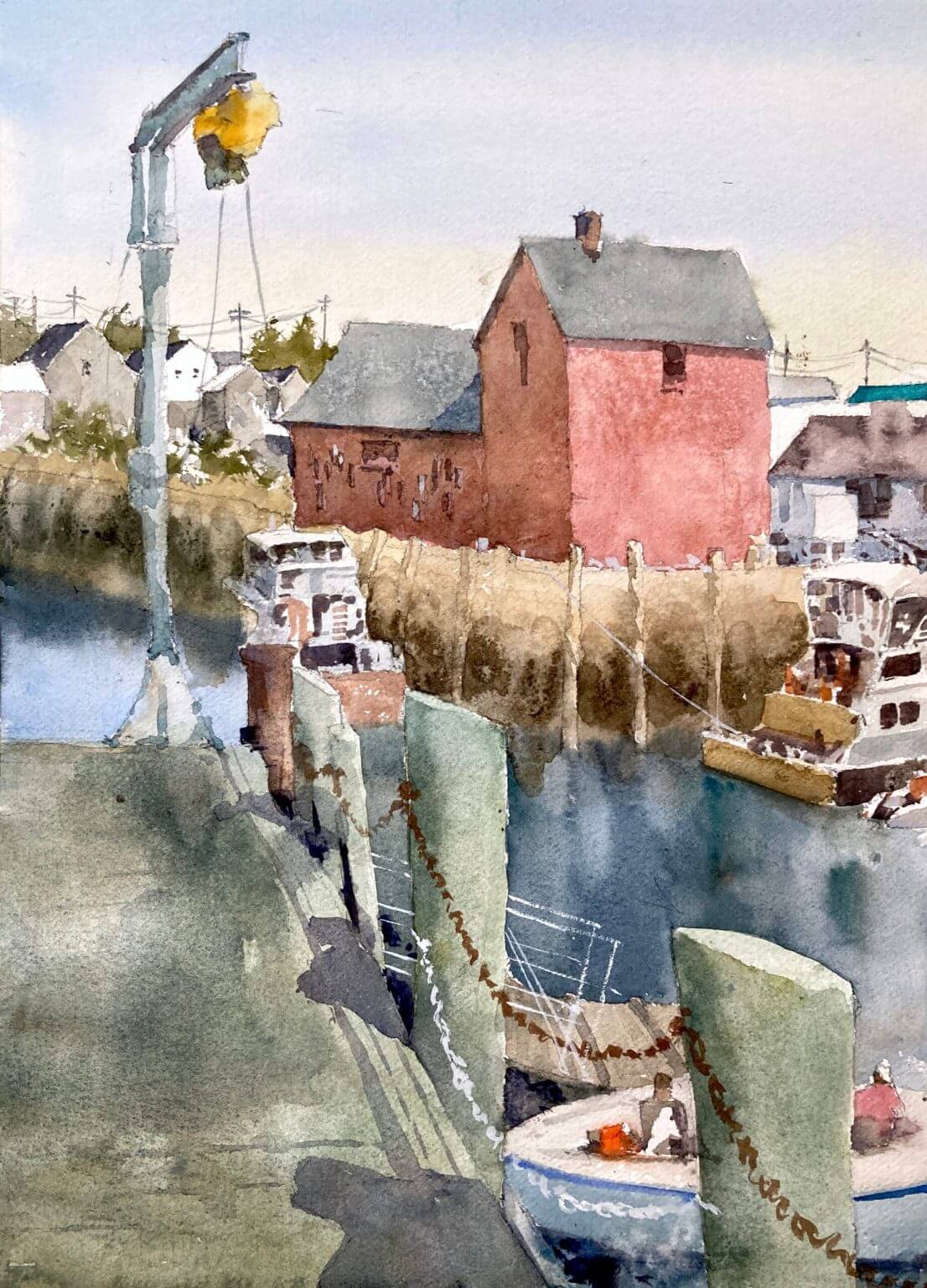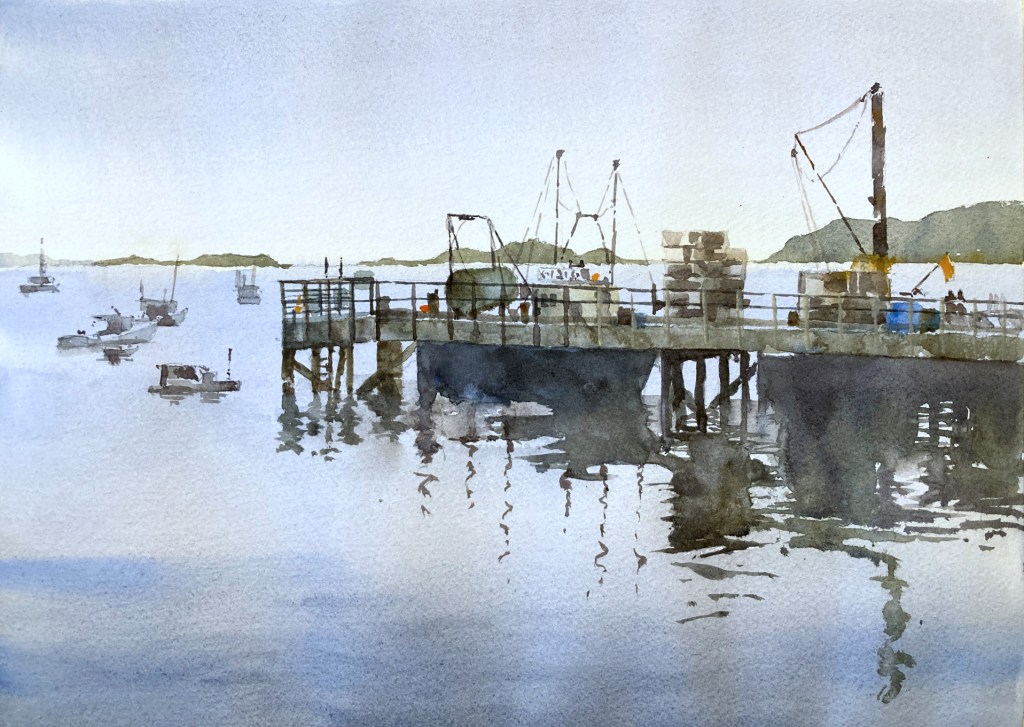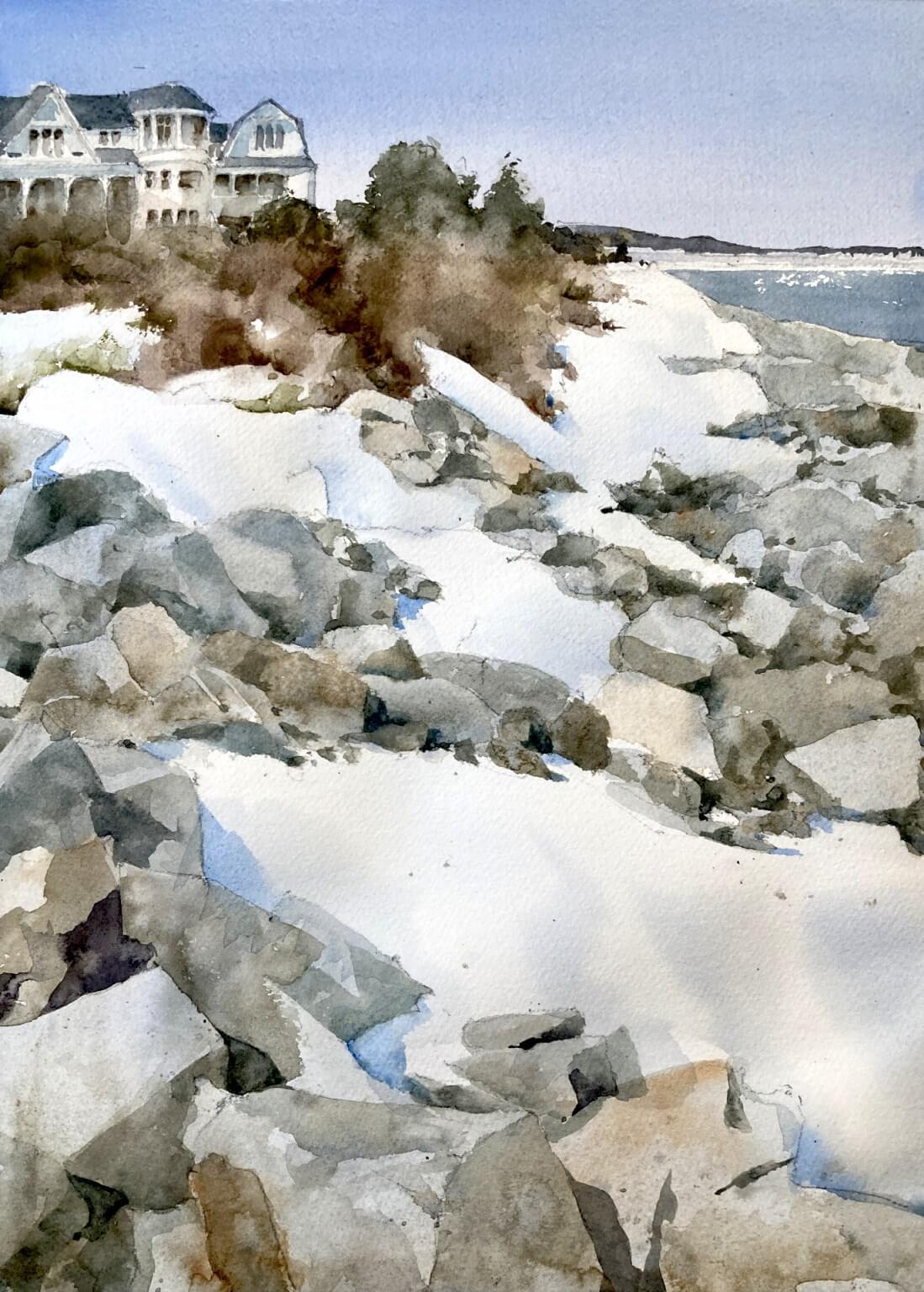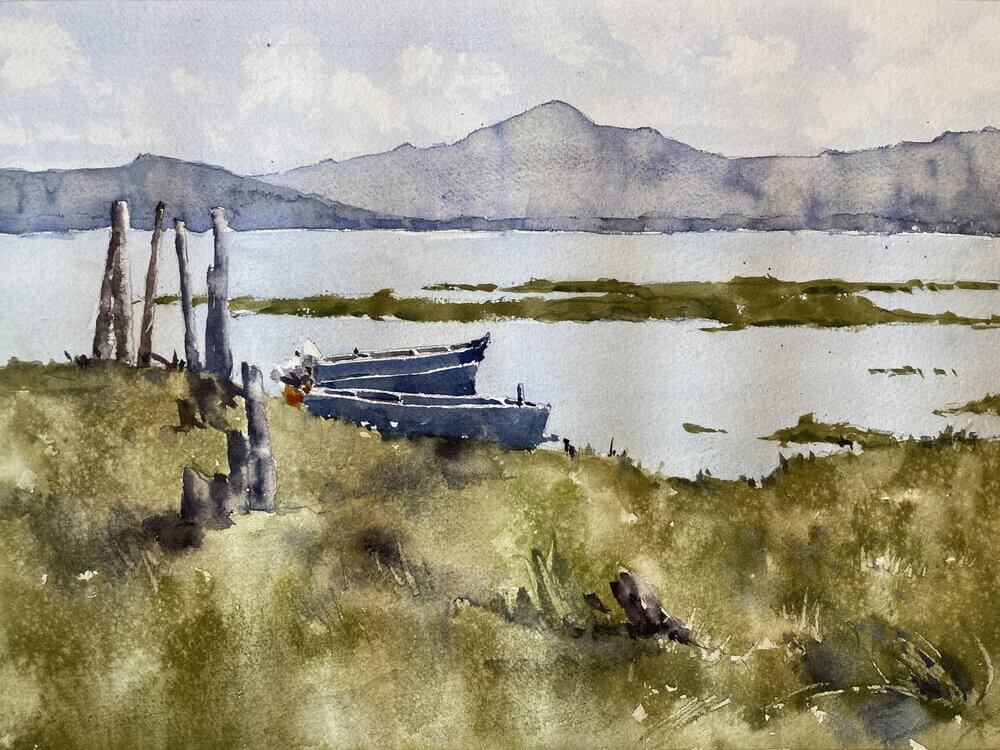Boston Common watercolor painting – day 13 of 30 in 30. I used to walk through the Common on my way to get my hair cut at a fancy Newbury St salon. This was back when we both had the fancy jobs and I hadn’t had any mad ideas of giving everything up and painting full time. Can’t say I miss the hair cuts but I do miss Boston Common. I wanted to focus on the statue and keep the buildings (probably a hotel?) misty and in the background.
Intersecting shapes attracted me to the composition
One of the things that really attracted me to this composition was the way the horse’s legs intersect giving an abstract pattern. As the statue is against the light the values are very close on the figure and the horse. This gives it a subtle, misty feel which I really like. The added texture due to granulating paint (mostly cerulean blue) and some water splattering adds to the effect.
Verticals are vertical – do I really have to say this again?
But oh that lamppost! It’s gone past loose to sloppy and I didn’t keep it straight. Lost edges are fine here (in fact probably essential) but I didn’t keep my eye on the ball here and the painting suffers.
On balance a good outcome
But on the whole this came out rather well I think. I love the texture on the statue and the muted colors. I’m getting behind on a painting a day so they’re coming thick and fast right now. Helps in some ways as you don’t worry too much over details.
A video to end with
I didn’t record this one (wish I had done now!) but here’s a link to a another Boston painting which was livestreamed in November. If you want to be notified of any upcoming videos or livestreams please subscribe to my youtube channel and join my mailing list.

